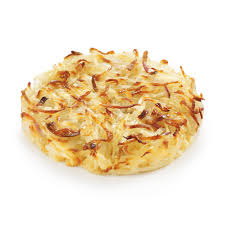Lemon Sole Meunier.
Lemon sole prepared with a Meunière sauce. See below.
Lemon sole prepared with a Meunière sauce. See below.
Sole Limande - Lemon Sole or Lemon Dab. A member of the flounder family with a fine texture. Tasty they may be; nevertheless, they take second place to the European Dover sole, the common sole; on the other hand lemon sole is less expensive than Dover sole. Smaller fish will be grilled or fried in individual portions and the larger fish baked or fileted and fried. Lemon sole will often be offered with recipes originally created for Dover Sole.
Lemon Sole on French Menus:
Papillote de Sole Limande et Julienne de Poireaux Anisée - Lemon sole cooked in baking parchment paper, (grease-proof paper in the UK), or aluminum foil. The fish is prepared together with finely cut leeks, using a cut that is called Julienne in France and lightly flavored with aniseed. When the fish is ready it be opened in front of the diners so that they may savor the aromas of the fish and the herbs.
Lemon Sole on sale in the UK.
Sole de Limande Meunière – Lemon sole prepared with a Meunière sauce. This is simple but tasty butter sauce, my favorite for Dover Sole. It is made with lemon juice and parsley added to melted butter. (in a restaurant that will be clarified butter). Meunière is a miller wife and the sauce is served with dishes a la meunière, sole prepared in the manner of a miller’s wife
Sole Limande au Beurre d'Orange et Amandes, Tomates et Confit de Fenouil – Lemon sole made with orange flavoured butter and almonds and served with tomatoes confit flavored with fennel. Vegetable confits and or a confit de fruit are vegetables or fruits slowly cooked with wine, wine vinegar or balsamic vinegar and sometimes added brown sugar. The fruits and vegetables do not need to be stored to achieve unique flavors; they will be offered as sweet jams, condiments or garnishes.
Join these early morning amateur fishermen.
In France on the Atlantic coast in the winter with the temperatures between 1-3° C. you may catch lemon sole close to the shore.
Photograph courtesy of quelquepartsurlaterre
https://www.flickr.com/photos/quelquepartsurlaterre/2117764456/
Tartare de Limande Sole aux Algues et Citron Confit – Lemon Sole Tartar prepared with seaweed and a lemon confit, practically a lemon jam.
Sole Limande Entière, Citron Confit et Beurre Noisette. Here a small lemon sole, for a single person will be fried, or grilled. A brown butter sauce, noisette is a hazelnut, and that is the color achieved by cooking butter to a light brown. The dish is served with a citron confit.
Lemon Sole is not to be confused with:
Limande, (not Limande Sole) on French menus. This is a small flounder called Common Dab in the UK and Dab in the USA.
or the
Limande à Queue Jaune. This is another smaller flounder called the Yellowtail Flounder in the USA and Mud Dab in the UK. These two smaller flounders with their confusing names are mostly smaller than the Lemon Sole and they may be daily specials on some menus.
Lemon Sole in the languages of France’s neighbors:
(Catalan - palaia groga), (Dutch – tongschar), (German - limande), (Italian - sogliola limanda ), (Spanish - mendo limón).
Lemon Sole in other languages:
(Chinese (Mandarin)- 小头油鲽), (Danish - rødtunge), (Estonian - harilik väikesuulest),(Finnish - pikkupääkampela), (Hebrew - לימון בלעדי), (Icelandic - Þykkvalúra),(Norwegian – lombe),(Polish - zlocica europejska), (Portugues - solha-limao),(Russian - камбала малоротая, malorotaja kambala),(Swedish –Bergskädda), (Latin - microstomus kitt).
Connected Posts:
Behind the French Menu
by
Bryan G. Newman
behindthefrenchmenu@gmail.com
Copyright 2010, 2016.
















